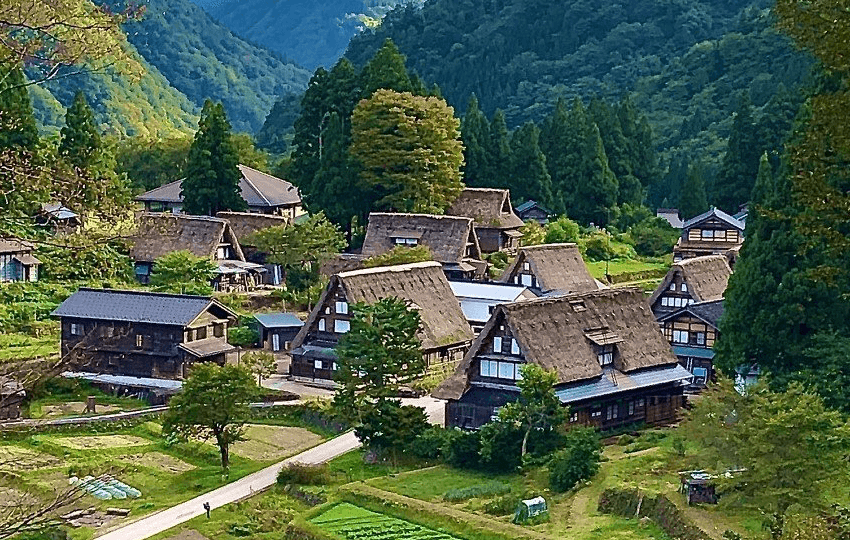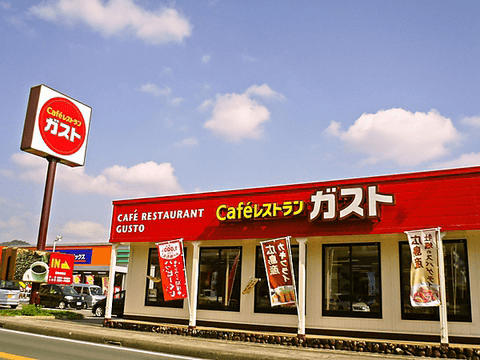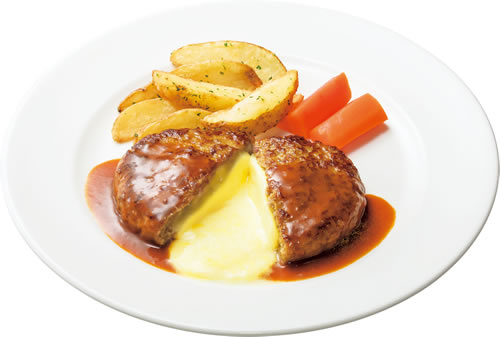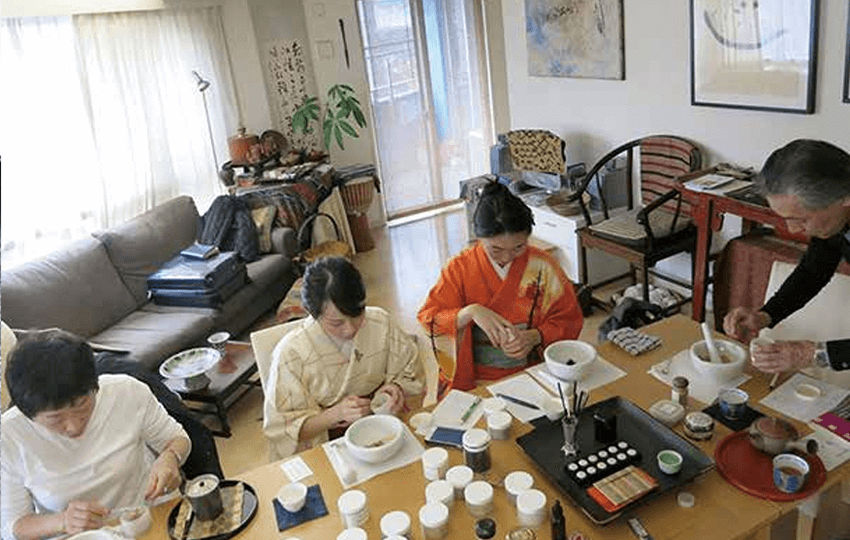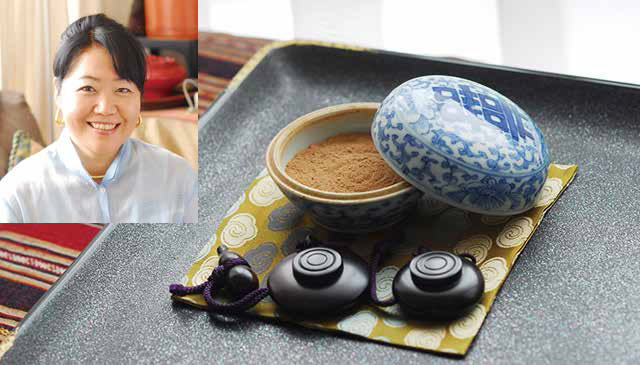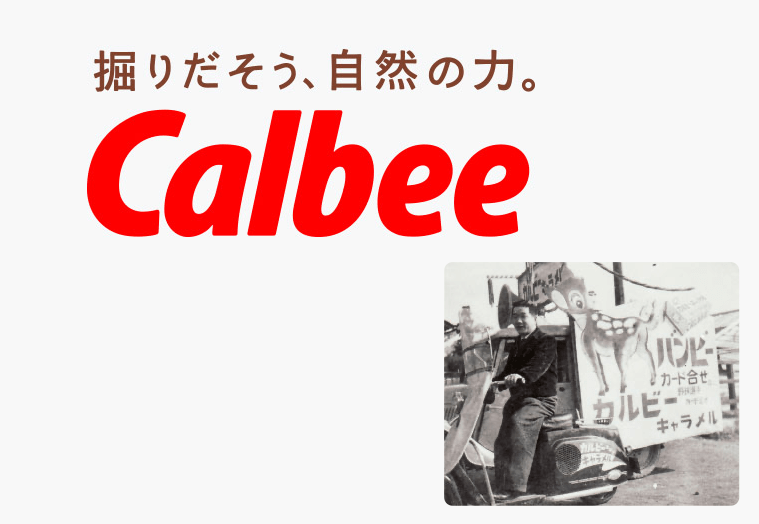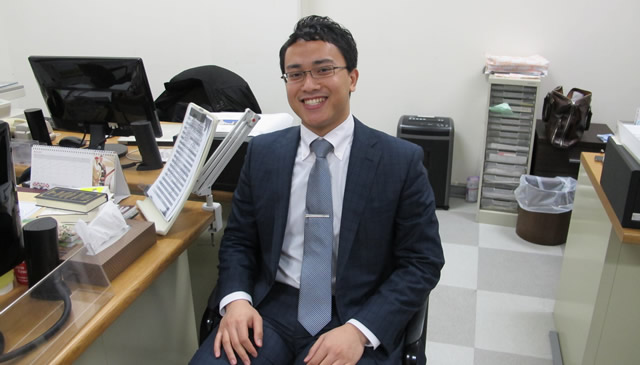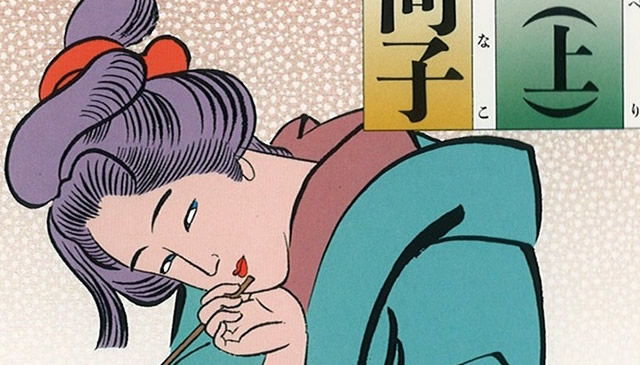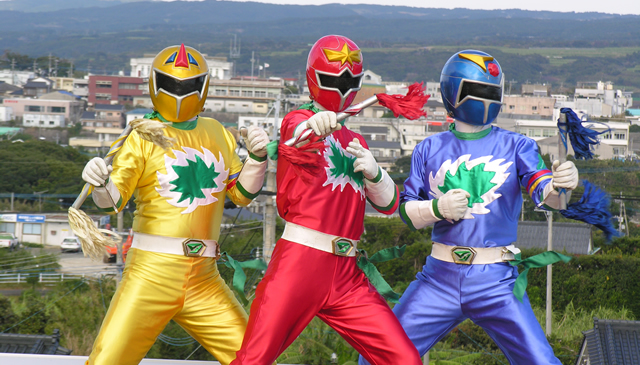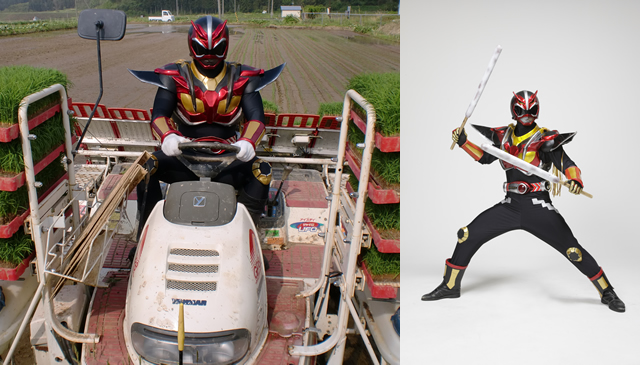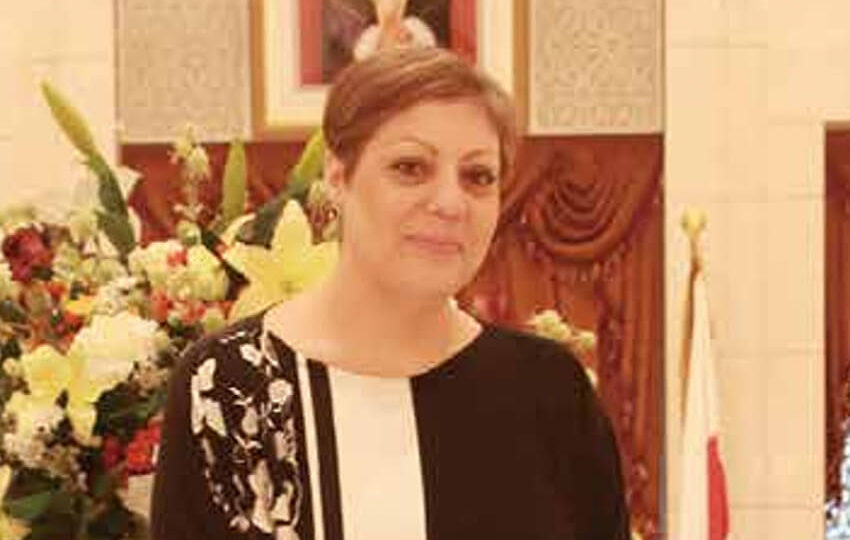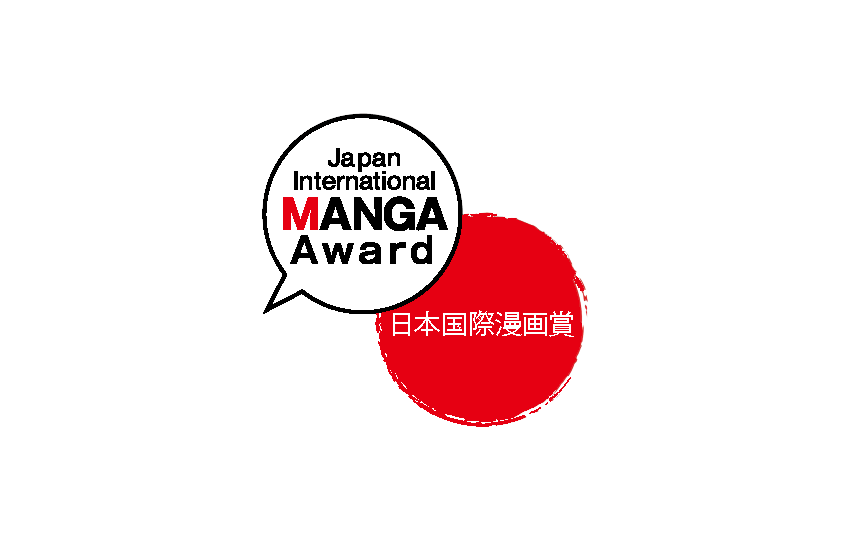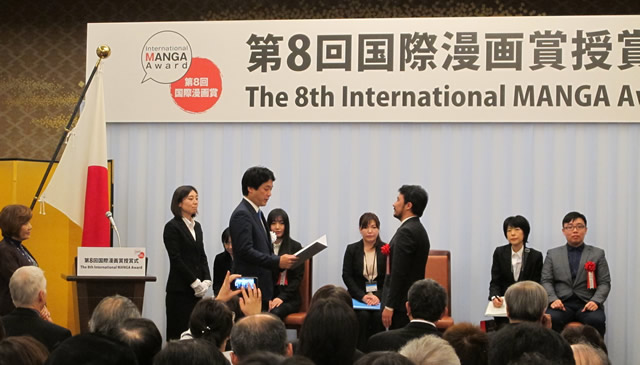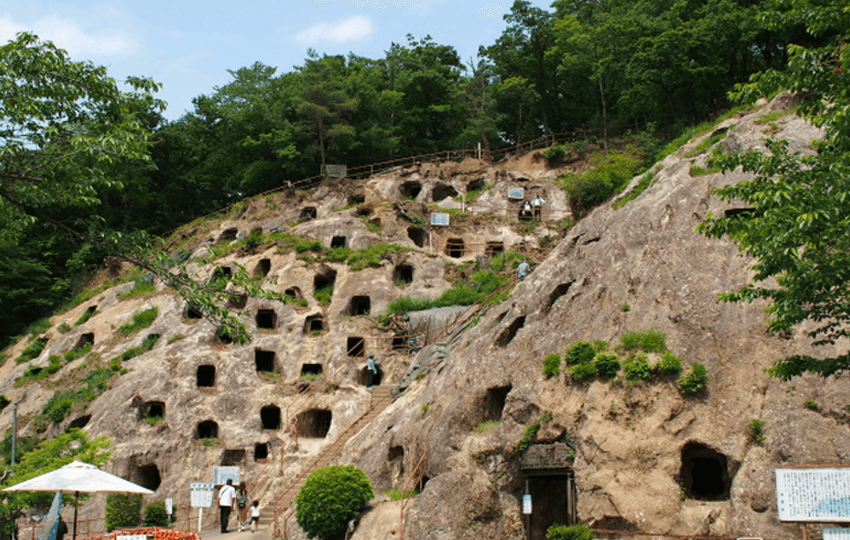-
[From May Issue 2015]
In Nanto City, Toyama Prefecture there are two villages with unique so called “gasshou-zukuri” style steeply sloping thatched roofs. This year marks the 20th anniversary since they were registered as a World Heritage Site. While most of the houses were built around 100 to 200 years ago, some of them have a history of around 400 years. Residents still live in them and at houses where accommodation and meals are provided, guests are served edible wild plants and iwana mountain trout by the hearth. The site is also a centre of production for washi Japanese paper and visitors can make round fans and postcards by taking part in the Japanese paper-making experience. From around mid-May every year, Ainokura Village is illuminated to create a magical Japanese countryside scene that will delight visitors.
Access: At JR Shin-Takaoka Station, get on the “World Heritage”bus, get off at “Ainokuraguchi”and walk about five minutes to Ainokura Village, or get off at “Suganuma” and walk about three minutes to Suganuma Village.
Gokayama Tourist Information Center
Opening hours: 9:00 a.m. – 5:00 p.m.
To park in the villages you must pay a fee that will be used for the conservation of these properties: 500 yen for standard or light vehicles, 100 yen for two-wheeled vehicles.
http://www.gokayama-info.jp/
Text: KAWARATANI Tokiko[2015年5月号掲載記事]富山県南砺市にある2つの集落で、合掌造りと呼ばれるかやぶき屋根が特徴。今年世界文化遺産登録20周年を迎える。100~200年前のものが多いが、約400年前に建てられたものもある。住民が今も生活しており、民宿ではいろりのそばで山菜やイワナが食べられる。和紙の産地としても知られ、和紙すき体験ではうちわやはがきを作ることができる。毎年5月中頃には相倉集落はライトアップされ、幻想的な日本の原風景が楽しめる。
交通:JR新高岡駅から世界遺産バスで「相倉口」下車、相倉集落まで徒歩約5分。または「菅沼」下車、菅沼集落まで徒歩約3分。
500 yen for standard or light vehicles, 100 yen for two-wheeled vehicles.
五箇山総合案内所
営業時間:午前9時~午後5時
相倉、菅沼集落の駐車場を利用するには、集落保存協力金として駐車代が必要。普通車、軽自動車500円、二輪車100円。
http://www.gokayama-info.jp/
文:瓦谷登貴子 -
[From May Issue 2015]
“Gusto” is Japan’s only family restaurant chain to have a branch in every single prefecture. The number of these stores exceeds 1,350. Here you can enjoy a wide variety of dishes for a reasonable price. The chain started as a self-service drink bar. Gusto is a community restaurant with close regional ties. There is also a sister chain of restaurants called “Steak Gusto” that focuses on steaks and hamburgers.
[No.1] Cheese IN Hamburger 499 yen
One of Gusto’s signature dishes. Four kinds of cheese, including camembert and mozzarella, are used. When you cut into the juicy hamburger with a knife, cheese oozes out.

[No.2] Generous Helping of French Fries 299 yen
These crispy potato fries have been enjoyed by customers since the company first opened for business. Recommended for groups to share.

[No.3] Omelet and Rice with Beef Stew Sauce Plate 699 yen
Fluffy omelet on a bed of rice covered with a thick beef stew and red wine sauce. The beef is cooked until it is very soft. Comes with a side salad.

※ Availability and prices vary depending on the restaurant.[2015年5月号掲載記事]「ガスト」は日本でただ一つ、全都道府県に店舗があるファミリーレストラン。店舗数は1,350店以上。バラエティー豊かなメニューをリーズナブルな価格で楽しめる。セルフサービスのドリンクバーを最初に始めた。地域に密着したコミュニティーレストラン。ステーキやハンバーグを中心とした「ステーキガスト」もある。
【No.1】チーズINハンバーグ 499円
ガストの看板メニュー。カマンベール、モッツァレラなど4種のチーズを使っている。ジューシーなハンバーグにナイフを入れると中からチーズがあふれ出す。
【No.2】ポテトフライ(山盛り) 299円
創業当初からの人気商品で、ほくほくとした食感が楽しめるポテトフライ。大勢でシェアしたいときにおすすめ。
【No.3】オムライスビーフシチューソースプレート 699円
赤ワイン入りの濃厚なビーフシチューソースがかかった、ふわふわ卵のオムライス。牛肉はやわらかくとろとろに仕上げている。サラダ付き。
※店舗により販売有無・価格は異なります。
-
[From May Issue 2015]

Incense Specialist
WATANABE Eriyo
Kodo “the way of incense” is a traditional art in Japan. Rather than saying “smell” the aromatic wood, we say “listen” to it. Listening to incense means appreciating its fragrance with keen attention. “Japan has four seasons. It’s blessed with the scents of different trees and flowers each season and a moderate level of humidity,” says incense specialist WATANABE Eriyo.
“The climate, too, from Hokkaido to Okinawa, is diverse; the country has 3,000 meters high mountains and a rich ecosystem. This environment has nurtured the delicate sensibilities of the Japanese people, especially our sense of smell and taste. I’m interested not only in Japanese aromas, but also in aromas from other countries, from history and how these relate to each other.”
Watanabe opened her “Setagaya Incense Salon” in Tokyo and from this base, she organizes workshops in which people make nerikoh (blended incense balls made by mixing together the raw materials and honey) based on a 1,000-year-old Japanese recipe and learn, through incense, about Japan’s classical literary works and traditional culture. All kinds of people participate, from foreigners who want to “experience something typically Japanese” to regulars who “look forward to listening to lovely fragrances.”
Watanabe organizes gatherings at which participants simply listen to incense. Many come just for one day. “When a workaholic listens to incense, their expression softens as if a mask has slipped off,” says Watanabe.
“It’s of course wonderful that kodo is such a rich subject, but it can also be a mental challenge because differentiating scents by ‘listening’ to them and comparing them is competitive. I want people to enjoy the calming and relaxing effects of incense, so they don’t compete with each other, they simply fully enjoy the fragrances. Since ancient times, incense has always been referred to as food for the soul. If you concentrate only on the fragrance, you lose your ego, become one with the whole universe and experience a state of bliss,” says Watanabe.
The reputation of Setagaya Incense Salon is spreading by word of mouth. The salon has been mentioned on an Australian travel website as one of the “Top Ten Things to Do Only in Tokyo” and on a German travel website as “a relaxing place.” “The enjoyment of scent has always been a cultural practice that has spanned the globe,” says Watanabe. Burning incense is a sacred act in Christianity, Islam, and in Buddhism. Since antiquity, there has been an international trade in the raw materials used to make incense.”
“As a student of art history in London, I rediscovered Japan when I learned that ‘Japan’ also meant lacquer ware. I later studied expressive arts therapy in Boston and while working in that area, I realized that incense had the same effect as expressive arts therapy. My biggest personal asset is the cross-cultural experience acquired on trips to 48 countries and during the time I lived abroad for ten years.”
Watanabe says enthusiastically, “When I burn incense that I made with a wish or a prayer, it feels as though that wish or prayer reaches heaven. I’d like to create new kinds of incense equipment and market them to the world.”
Incense Research Institute
Text: SAZAKI Ryo/文:砂崎良[2015年5月号掲載記事]香研究家
渡辺えり代さん
日本には香道という伝統文化があります。香道では香木の香りは「かぐ」といわず、「聞く」といいます。聞香とは、心を研ぎ澄まして耳を傾けるように香りを鑑賞するという意味です。「日本は四季があります。それぞれの季節の樹木や花の香りに恵まれ、適度な湿気もあります」と香研究家の渡辺えり代さんは話します。
「また、北海道から沖縄まで気候が多様で、3千メートル級の山々もあり、生態系が豊かです。この環境が日本人の繊細な感覚、とくに嗅覚と味覚を育んだのです。私は、日本のお香に限らず、世界の香文化と歴史、そしてつながりに興味をもっています」。
渡辺さんは東京で「世田谷香サロン」を開いていて、そこを拠点に、日本に千年前から伝わるレシピに基づいて練香(香原料を蜜で練り合わせたお香)を作ったり、お香を通じて日本の古典文学や伝統文化を学ぶワークショップを開いています。参加者は、「日本らしいことを体験してみたい」という外国人から、「いい香りを聞くのが楽しみ」と通う人までとさまざまです。
渡辺さんが行っているのは、シンプルに香りを聞く集まりで、一日だけ受講する人もたくさんいます。「ばりばり働いている方がお香を聞くと、仮面が落ちたかのようにやわらかい表情になるんですよ」と渡辺さんは言います。
「伝統的な香道はもちろん奥が深くてすばらしいですが、香りを聞き比べてそのお香の名前を当てるという競技形式なので、頭を使います。私はお香の鎮静作用やリラックス効果を味わっていただきたいので競技はせず、いい香りを堪能していただくやり方をとっています。お香は昔から魂の食べものといわれていて、無心になって香りに集中すると、自分という枠の意識が消えて、宇宙全体と一つにとけ合い、至福を感じます」と渡辺さん。
世田谷香サロンは口コミで広まっています。オーストラリアの旅行サイトで「東京だけでできることトップテン」の一つとして取りあげられたり、ドイツの旅行サイトでも「リラックスできる場所」と書かれたりしました。「お香を楽しむのは、そもそもとても国際的な文化なのです」と渡辺さん。キリスト教でもイスラム教でも仏教でもお香をたくというのは神聖な行為です。香原料の交易は古代から国際的に行われてきました」。
「ロンドンで美術史を学んでいたとき、JAPANが漆器を意味すると知って日本を再発見しました。その後ボストンで芸術療法を修めてその仕事をし、芸術療法によって得られる効果がお香にもあると気がついたのです。48ヵ国への旅と10年間の海外生活から得た異文化体験は私の一番の財産です」。
渡辺さんは「祈りや願いをこめて作った練香をたくと、その思いが天に届くような気がします。新しいスタイルの香道具を開発して、世界に発信したいです」と意気込みます。
香研究会IRI
文:砂崎良 -
[From May Issue 2015]
Calbee
In Japan, fried carbohydrate snacks of corn, potatoes, or beans, are called “snack gashi.” CALBEE, Inc. products account for a 50% share of this market. The word Calbee is neither Japanese nor English. It conveys the sentiments of the company’s founder who was thinking of the nation’s good health when he coined the word.
Founded in Hiroshima Prefecture in 1949, the company was formerly known as Matsuo Food Industries. MATSUO Takashi, then president, was concerned about malnutrition among post-war Japanese people and aimed to create products that would improve the health of consumers. The company name was changed in 1955 to Calbee Foods and Confectionery Co., Ltd.; a name that combines calcium, “cal,” and vitamin B1, “bee.”
In that same year, the company succeeded in making arare (roasted mochi pieces) from wheat rather than rice – the main ingredient up until then – and marketed it as “Kappa Arare.” In 1964, “Kappa Ebisen,” a snack made from mixing ground raw shrimp into wheat dough, was developed. It became a big hit and the jingle “I can’t stop, I won’t stop, Calbee, Kappa Ebisen” made the Calbee name popular throughout the nation.
The year 1972 saw the launch of the potato based snack, “Sapporo Potato.” The company’s name was shortened to CALBEE, Inc. when its head office moved from Hiroshima to Tokyo in 1973. In 1975, “Potato Chips” was launched, a snack which later became one of the company’s core products. In 1985, the material used in the packaging of all products was switched from vinyl to aluminum film. This prevented any loss of flavor caused by oxidation.
Calbee takes great care in its control of raw ingredients. For example, shrimps – one of the ingredients in Kappa Ebisen – are carefully selected, flash-frozen while fresh to a temperature lower than -30 °C and transported to the factory. In the factory, the entire shrimp, including shell, is ground up and used. Red particles on the exterior of Kappa Ebisen are proof that the whole of the shrimp is used.
Approximately 330 thousand tons of potatoes are procured yearly to make potato chips and other products. From breeding potato varieties to cultivation, to storage, to transportation, to sales, an agreement has been made with other manufacturers to work in cooperation with each other to ensure the entire process goes smoothly. Currently more than 1,000 producers in the Hokkaido area alone have entered into this contract. The so-called field men of Calbee Potato, Inc. (an affiliated company in charge of potato procurement, storage, etc.) support the producers with surveys, advice and an exchange of information concerning cultivation.
Calbee products are consumed in ten other countries. For example, “Harvest Snaps” made from beans are popular in the US, Canada, and the UK. In Singapore, “Hot & Spicy” potato chips are a hit and in Thailand, “Kappa Ebisen Original” – developed locally for the Thai palate – is selling well.
The total number of products produced by Calbee in Japan in the financial year of 2013 was 1.8 billion. The company organizes “Calbee Snack Schools” to teach children how to have a healthy enjoyable diet. In 2013 62,251 children in 787 schools across the nation attended the course. This project not only increases the number of Calbee fans, but is also the company’s way of contributing to regional development.
CALBEE, Inc.
Text: ITO Koichi[2015年5月号掲載記事]カルビー
日本では、トウモロコシやイモ、豆などの炭水化物を使って揚げた菓子類を「スナック菓子」と呼んでいます。この分野で国内の半分を超えるシェアを占めているのがカルビー株式会社の商品です。カルビーは日本語でも英語でもありません。国民の健康を願う創業者の気持ちが込められた造語です。
同社の前身は1949年に広島県で設立された松尾糧食工業株式会社です。当時の社長だった松尾孝さんは戦後の日本人が栄養不足に陥っていることに胸を痛め、健康に役立つ商品づくりを目指しました。1955年、大事な栄養素であるカルシウムの「カル」とビタミンB1の「ビー」を組み合わせたカルビー製菓株式会社に社名を改めました。
同じ年に、本来は米でつくるあられを小麦でつくることに成功し、「かっぱあられ」として売り出しました。1964年には生えびを小麦生地に練りこんだ「かっぱえびせん」を開発。これは「やめられない、とまらない、カルビー、かっぱえびせん」というCMソングと共に大ヒットし、カルビーの名を全国に広めました。
1972年にはじゃがいもを原料にした「サッポロポテト」を発売。1973年に本社を広島から東京へ移したのを機に現在の社名に変更しました。1975年には同社の代表商品となる「ポテトチップス」を売り出しました。1985年からは全製品の袋をビニール製からアルミ蒸着フィルムに変えました。これによって酸化で風味が落ちることがなくなりました。
カルビーは原料の管理にとても気をつかっています。例えば、かっぱえびせんの原料となる小えびは厳選され、新鮮なうちにマイナス30度以下に急速冷凍され、工場に運ばれます。工場では小えびを殻ごとミンチにして頭からしっぽまで丸ごと使います。かっぱえびせんの表面に赤いつぶつぶがあるのは、小えびをすべて使っている証拠です。
ポテトチップスなどに使われるじゃがいもの調達量は年間約33万トン。契約生産者と協力し、品種の開発から栽培、貯蔵、輸送、販売までを一貫して管理する仕組みを整えています。現在は北海道だけで1,000人以上の生産者と契約しています。フィールドマンと呼ばれるカルビーポテト株式会社(じゃがいもの調達、貯蔵などを担うグループ会社)のスタッフが栽培に関する調査や助言、情報交換で生産者を支援します。
カルビーの製品は海外10ヵ国でも食べられています。例えば、アメリカ、カナダ、イギリスでは、豆を原料に使った「ハーベストスナップス」が人気です。シンガポールではポテトチップスの「ホット&スパイシー」が、タイではタイ人の好みにあわせて現地で開発した「かっぱえびせんオリジナル」が売れています。
2013年度のすべての商品の国内生産量は約18億袋。同社は子どもたちに健康的で楽しい食生活の仕方を伝える「カルビースナックスクール」を開催。同年度は全国787校の62,251人が受講しました。この企画はカルビーファンを増やすだけでなく、地域貢献策としても役立てられています。
カルビー株式会社
文:伊藤公一 -
[From May Issue 2015]

Furat BANTAN
“It’s gotten so that when I’m with non-Japanese friends in a restaurant, waiters only address me. Of course, I can speak Japanese and added to that, since I am of Indonesian descent, I appear to be Japanese, however I am a Saudi Arabian born and raised in Mecca,” says Furat BANTAN in a droll manner with perfect pronunciation. “I am Bantan, just like junbi bantan (completely ready,)” he jokes.
Japanese anime and games are extremely popular with young people in Saudi Arabia. Bantan also became interested in Japan because of this. “I watched Japanese anime and played Japanese games that were not translated into Arabic with the help of English subtitles. Thanks to this, I became accustomed to the Japanese language and, since I often checked words in the English dictionary, I memorized English words as well,” he laughs.
After graduating from high school Bantan won a scholarship from the Saudi Arabian government to study aboard and elected to go to Japan. “In Saudi Arabia, Japanese cars, air-conditioners, TVs and so forth are highly prized. I also wanted to learn about such advanced technology,” he says.
When Bantan came to Japan he attended a Japanese language school in Osaka. “Teachers admired me and said ‘Bantan, your Japanese is very good,’ but my listening, pronunciation, and keigo (formal language) skills were all down to watching anime,” he says modestly. One year later, he entered the Tokyo Institute of Technology – one of Japan’s most prestigious universities.
What awaited him at university were classes in which scientific and technical terms were frequently used. “I didn’t even understand which textbook I had to open. I asked the Japanese student sitting next to me ‘which one is it?’ and received an astonished look,” says Bantan. Moreover, the classes and textbooks were aimed at students who’d studied the curriculum of Japanese high schools. “Classes progressed as if I would naturally know things I had not learned at high school in Saudi Arabia.”
Bantan could not keep up with the classes at all and he had to repeat his first year. “It was so difficult that I wanted to die. There was an exchange student from my own country in my dormitory, so we survived by cheering each other up. After all, kanji is difficult. Arabic letters are phonetic symbols, so I had a very hard time with kanji which have numerous pronunciations,” he says.
Bantan bought textbooks written in English and studied by comparing the Japanese textbooks to them. “I taught myself from the most basic level with titles like ‘anyone can understand’ and ‘for Dummies’ (for people who do not know the subject). Because English was not my mother tongue, it was difficult to understand the contents. But I came to understand the technical terminology as I checked the equivalent term in English.” After about a year and a half of entering university he came to understand what was being taught in class. He passed the N1 grade of the Japanese proficiency test when he was in his senior year.
He also experienced the Japanese system of job hunting. “Because Japanese companies demand that I act the same way as Japanese natives, I wore a suit and carried a bag just like them,” he says humorously. When (the then) Crown Prince Salman visited Japan from Saudi Arabia, Bantan acted as an interpreter. Currently, he works at a Saudi Arabian government office located in Tokyo. “I want to encourage interaction between Saudi Arabia and Japan. In addition, it’s my dream to someday start a business. I want to dedicate my entire life to creating the Bantan Group that will establish and run schools teaching Arabic, regular schools, mosques, and more.”
Text: SAZAKI Ryo[2015年5月号掲載記事]フラート・バンタンさん
「外国人の友人たちとレストランにいると、店員が僕にだけ話しかけてくるようになります。確かに僕は日本語が話せますし、インドネシアの血を引いているので日本人にも見えるようですが、メッカで生まれ育ったサウジアラビア人ですよ」と、フラート・バンタンさんは完璧な発音で、ひょうきんに話します。「準備万端のバンタンです」とジョークも飛ばします。
サウジアラビアでは日本のアニメやゲームが青少年に大人気です。バンタンさんもそれで日本に興味を持つようになりました。「アラビア語には訳されていない日本のアニメやゲームを、英語字幕を頼りに見たりプレーしたりしていました。おかげで日本語に慣れましたし、英語辞書をよく引いたので英単語も覚えました」と笑います。
バンタンさんは高校卒業後、サウジアラビア政府の奨学金で留学できることになり、日本を選びました。「サウジアラビアでは、日本の車やエアコン、テレビ等がとても評価されています。そういう高い技術を学びたいという気持ちもありました」と言います。
来日したバンタンさんは大阪で日本語学校に通いました。「先生たちは、バンタン君はとても日本語が上手ですねと感心していましたが、聞き取りや発音、敬語ができたのはアニメで慣れていたからです」と謙遜します。1年後、難関大学の一つ、東京工業大学に入学しました。
大学で待ち受けていたのは、理系の専門用語がひんぱんに出てくる授業でした。「開くべき教科書もわからず、となりの日本人に『どの本ですか』と聞いて、あきれられました」とバンタンさん。それに授業や教科書は、日本の高校のカリキュラムで学んできた学生向けにできていました。「サウジアラビアの高校では教わらなかったことも、当然知っているものとして授業が進んでいきました」。
バンタンさんは授業にまったくついていけず、1年目は留年してしまいました。「死にたいと思うくらいつらかったですね。寮に同国の留学生がいたので、なぐさめ合って乗り切りました。やはり漢字は難しいです。アラビア語の文字は表音文字なので、読み方が何通りもある漢字にはとても苦労しました」と言います。
バンタンさんは英語で書かれた教科書を買って、日本語のものと読み比べながら勉強しました。「タイトルに『だれでもわかる』とか『for Dummies』(わからない人のための)とか書いてある、いちばん低いレベルから独学しました。英語も母語ではありませんから、内容を理解するのが大変でした。でも専門用語は英語と突き合わせているうちにわかるようになりました」。入学して1年半ほど経った頃から授業がわかるようになりました。4年生のときにはN1に合格しました。
日本の就職活動も経験しました。「日本の企業は日本人と同じ行動をすることを求めるので、リクルートスーツを着てカバンを持って、ですね」とおどけて言います。サウジアラビアからサルマン皇太子(当時)が来日したときには通訳を務めました。今は東京にあるサウジアラビアの政府機関で働いています。「サウジアラビアと日本の架け橋になりたい。そしていつかは起業するのが夢です。アラビア語を教える学校や、普通の学校、モスクなどを設立・運営するバンタン・グループを一生かけてつくりたいです」。
文:砂崎良 -
[From May Issue 2015]
Sarusuberi (Crape Myrtle)
This story is about “ukiyoe” (wood block print) artist KATSUSHIKA Hokusai, and his daughter Oei, who lived in Edo – the former name of Tokyo. Drawing on her knowledge as a scholar of Edo manners and customs, writer SUGIURA Hinako carefully depicts the culture and lifestyle of the common people of those times. The title, “Sarusuberi,” is taken from a flower that blooms for about 100 days from early summer to autumn. According to the writer, the vitality of the plant whose recurring blossoms are heavy enough to bend its branches, chimes with her image of Hokusai. The story was serialized in Manga Sunday Magazine from 1983 to 1987.
On a winter morning in 1814 towards the end of the year, IKEDA Zenjiro, one of Hokusai’s pupils, rushes into the tenement house where his master Hokusai and his master’s daughter, Oei live. When Oei says she does not want any trouble, Zenjiro hands her a picture, saying he has just seen a freshly severed woman’s head. He has drawn a picture of a head that has been displayed in front of the gate of a samurai residence. Hokusai says he wants to see the sight for himself and, accompanied by Zenjiro, sets off to see it for his own amusement.
But the facts about the case of the severed head become clear when Zenjiro saves the life of a man who tries to take his own life by throwing himself into the river. The man was in service to a samurai and the head belonged to this samurai’s daughter. The daughter had fallen in love with a man from a different class and had been forced to break off the relationship. Subsequently this man was executed. Following him in death, the daughter took her own life. The man who had tried to throw himself into the river, had told his master about the couple’s relationship. After placing the woman’s head at the gate, he tried to kill himself, too.
Unsurprised by this, Hokusai simply convinces the man to enter the Buddhist priesthood so he can free himself from his suffering. Hokusai never offers consolation that is considerate of people’s feelings, nor does he give advice to lighten the heart. The way Hokusai behaves reflects the unsentimental mind-set of Edo’s citizens.
Hokusai is a sharp-tongued and short-tempered man who, despite being married, has affairs with his female pupils. When he is invited to show off his painting skills to the shogun, he fails to impress. A lively portrait is painted of an eccentric and fallible human being.
The appeal of this work is, in addition to the character of Hokusai, its affectionate depiction of people living in Edo. Mingled with the stories dealing with everyday life are stories in which dead people and ghosts appear. During this period of undeveloped medical treatment, earthquakes and famines occurred. Death was close at hand and this world and the afterlife existed side by side. The wall between reality and illusion was thin, enabling humans and fantastical beings to easily come and go between the two worlds.
At the story draws to a close, Hokusai divines that his infant daughter has died when a strong wind blows on his tenement house. Here, more than sorrow, the fragility of life is emphasized. At the same time, Hokusai’s deep fear of death is portrayed. This is not the only part of this work in which Hokusai shows his weak side. The work shows Hokusai not only as a great artist but also as KAWAMURA Tetsuzo, an ordinary man, as well as depicting the town of Edo where he lived.
Text: HATTA Emiko[2015年5月号掲載記事]百日紅
東京が江戸と呼ばれていた頃、浮世絵師として活躍した葛飾北斎と、娘お栄の暮らしを描いた物語です。江戸風俗研究家でもあった作者、杉浦日向子の知識を活かして、当時の文化や庶民の生活がていねいに描かれています。タイトルの百日紅は、初夏から秋まで百日間花が咲く植物のことです。作者は、花の重みで枝が曲がるほど咲き、花を散らせてはまた咲かせ続ける百日紅の生命力が、北斎に重なったと語っています。漫画サンデーにて1983年から1987年まで連載されました。
時は1814 年、年の瀬が近い冬の朝、北斎とお栄が住む長屋に弟子の一人である池田善次郎が飛び込んできます。面倒はお断りだと文句を言うお栄に、善次郎は「女の生首を見た」と絵を手渡します。武家屋敷の門前に置かれた生首を描き写してきたのです。北斎は自分も見たかったと悔しがり、気晴らしに善次郎を連れて出かけます。
途中で川へ身を投げる男を目撃し、善次郎がその男を助けたことから、生首事件の真相が明らかになります。首の主は男が仕えていた武士の家の娘でした。娘は身分違いの恋をして仲を引きさかれたうえに、愛した人を死罪にされてしまいました。そして後を追って命を絶ったのです。二人の仲を主人に告げ口したのが、身投げした男でした。彼は娘の首を門前に供え、自分もまた死のうとしていたのです。
北斎は驚きもせず、あっさりと男を出家させて苦しみを断ち切ってやります。決して相手の気持ちに寄りそってなぐさめたり、心を軽くする言葉をかけるような思いやりを表には出しません。こうした北斎の振る舞いは、湿っぽさを嫌がる江戸っ子ならではの気質です。
口が悪くて気が短く、妻がいながら女弟子と関係を持ちます。絵を描く様子が見たいと将軍に招かれれば、いいところを見せようとして失敗する。人間くさい変人ぶりが、いきいきと描かれます。
北斎のキャラクターに加え、江戸の町で暮らす人々が細やかに描写されているのも本作の魅力です。生活感にあふれた話の中に、動き出す死人や妖怪の出てくる話が混じっています。医療が発達しておらず、地震や飢饉も起こった時代です。死はとても身近にあり、この世とあの世は隣り合って存在していました。現実と幻想を隔てる壁は薄く、人間も異形の者たちも、たやすく互いの世界を行き来します。
物語の終盤で、北斎の幼い娘が病気で亡くなったのを、長屋に吹き付ける強風が知らせます。そこでは悲しみよりも、去っていく命のはかなさが表現されています。同時に死をひどく恐れる北斎の思いも語られます。本作の中で唯一、北斎が弱さを見せる場面です。歴史に名を残す偉大な絵師としての姿だけでなく、川村鉄蔵という一人の人間としての北斎と、彼の生きた江戸を見ることができる作品です。
文:服田恵美子 -
Local Heroes Born From Love of Home Towns
- Hiragana Times
- Dec 15, 2015
[From April Issue 2015]
Heroic characters that come to the aid of the weak and slay evil are well-liked in Japan. Many Japanese grow up watching TV programs about such heroes. Each region has its local mascot and the number of heroic characters, too, is increasing. These are called local heroes.
Local mascots are created to promote local produce or to revitalize their region. However, most local heroes come into being because of the locals’ affection for their region or from their longing for a heroic character. It’s said that as many as 700 heroic characters exist in Japan. They are popular not only with children, but also with grownups.
On Tanegashima Island in Kagoshima Prefecture, “Rito Shentai Tanegashiman” is popular. This team of heroes were created 17 years ago by a local youth club. Speaking the local dialect, rather than fighting like heroes, their role is to inspire the people of Tanegashima. The Tanegashiman team is already renowned not only in Kagoshima but in other prefectures. “I’d like everyone in the country to know about Tanegashima and Tanegashiman,” says KUKIHARA Kiyotaka of the PR department of Tanegashima Action Club.
Tanegashiman get a lot of requests to appear at long-distance relay races and, being well-received by the elderly, at local class reunions for 60-year-olds. To the surprise of the youth club’s members, their villainous enemies, the Jabatche, have also become popular. The Jabatche speak the Tanegashima dialect and make people laugh with jokes about audience members. Their amusing banter with the audience is the talk of the town.
Chojin Neiger
The local hero of Akita Prefecture, too, is also massively popular. Super God Neiger was inspired by the well-known cry of Akita’s local deity Namahage “Warui ko wa ‘ineiger’/inai ka.” (Are there any naughty children here?) His true identity is AKITA Ken., a young man from an ordinary family of farmers. He protects the peace from baddies. When he transforms into Neiger his rallying cry is “Super God Neiger, protector of the sea, the mountains and Akita!”
EBINA Tamotsu, who was instrumental in the creation of Super God Neiger, has loved heroic characters since his childhood. He believes Neiger’s popularity is in the way that the hero embraces the Akita world. A TV program about Neiger was broadcast not only in Akita, but also in Tokyo. “Nothing makes me happier than hearing children cheering,” says Ebina.
Local heroes might utilize regional products as weapons or have a signature pose. TAKAMOTO Shintaro is a fan of local heroes and even travels to distant locations for meet-and-greet events and shows. “I find it particularly interesting that they speak in dialects. It’s also fun to compare regional idiosyncrasies,” he says.
Most heroes fight their enemies in order to keep the peace and protect the environment in their regions. They therefore set a good example to children. Some adults are nostalgic for the heroes they once looked up to. Local heroes will continue to serve locals’ affection for their region.Text: TSUCHIYA Emi[2015年4月号掲載記事]
弱い人を助け、悪を退治するヒーローキャラクターが日本で人気です。多くの日本人がそんなヒーローのテレビ番組を見て育ちました。各地にはご当地キャラクターがいますが、ヒーローのキャラクターも増えています。彼らはご当地ヒーローと呼ばれています。
ご当地キャラはその地方の名産品の宣伝や、地域を活性化する目的でつくられます。一方、ご当地ヒーローは地元の人のふるさとへの愛情や、ヒーローへの憧れから生まれることが多いです。今では日本全国に700ものヒーローキャラクターが存在するといわれています。子どもだけでなく大人にも人気があります。
鹿児島県の種子島では、「離島閃隊タネガシマン」が人気です。17年前に地元の青年団が考え出しました。種子島の方言を話し、戦うヒーローというよりも種子島に閃きを与える役割を担っています。今では鹿児島だけでなく他の県でも知られるようになりました。「全国の人に種子島とタネガシマンについて知ってほしいです」と種子島アクションクラブ広報部の久木原清貴さんは話します。
駅伝大会や地元の還暦同窓会などへの出演依頼が多く、お年寄りにも歓迎されています。青年団の人たちにとって意外だったのは、タネガシマンだけでなくジャバッチェという悪役にも人気が出たことです。ジャバッチェは種子島の方言を話し、お客さんをネタにして笑いをとります。そのやりとりが面白いと評判になりました。秋田県にも大人気のご当地ヒーローがいます。有名な秋田の神様、なまはげの叫び声「悪い子はいねが(悪い子はいないか)」にちなんだ「超神ネイガー」です。その実体はごく普通の農家の青年、アキタ・ケンです。彼は悪者から平和を守ります。変身のときの決め台詞は「海を、山を、秋田を守る、超神ネイガー!」です。
超神ネイガーの生みの親、海老名保さんは子どもの頃からヒーローキャラクターが大好きでした。ヒーローものに秋田の世界を取り入れたことが人気の理由と考えています。テレビ番組は秋田だけでなく東京でも放送されました。「子どもたちの声援が何よりもうれしいです」と海老名さんは言います。
ご当地ヒーローはその地域の特産物を武器にしたり決めのポーズに取り入れたりしています。ご当地ヒーローファンの高本新太郎さんは握手会やショーのため遠方にも足を運びます。「方言でしゃべるところが特におもしろいです。地域の個性が出ているので比較する楽しみもあります」と言います。
多くのヒーローは地域の安全や自然保護のために敵と戦います。そのため、子どもたちにとってよいお手本となっています。また、大人の中には昔憧れたヒーローを懐かしく思い出す人も多いのです。これからもご当地ヒーローは地元の人の郷土愛に貢献していくでしょう。文:土屋えみ
-
[From April Issue 2015]
[2015年4月号掲載記事]After sustaining damage in the Great East Japan Earthquake and going through the disaster of the Fukushima Daiichi nuclear power station, in March 2011 a manufacturer in Fukushima Prefecture received an order worth 2.6 billion yen for water purifiers. The order came with a message: “You can use the water purifiers in areas affected by the disaster before delivery.” “It was the least support our country could offer to our friends in Japan,” says Abeer A. AISHA, wife of the Ambassador of Oman, modestly.
Mrs. Aisha arrived in Japan in January 2008. “My husband visited Japan in 1994 and had a homestay experience with a Japanese family. He was treated very well by his host family, almost like a real son. I’d also heard from my acquaintances that Japanese people were very kind. Our daughter got very ill during the flight to Japan, so she went straight to a hospital upon arrival. She was very well taken care of, so well that it made me understand just how good Japanese people are.”
Japan is the first country she’d been posted to as an ambassador’s wife. “I like casual socializing; formal situations aren’t my cup of tea. So I was very nervous when we paid a visit to the Imperial Palace,” she says. “When the Empress spoke to us, she was quite friendly even though the meeting was rather formal. I was anxious, but she made me relax.”
Mrs. Aisha attends official ceremonies and is required to socialize and take part in activities not only with Japanese, but also with diplomats and ambassadors’ wives from other countries. “At first, I felt under pressure when people paid attention to me, my dress and my speech,” says Mrs. Aisha. “I got homesick because back home I always spend a lot of time with my parents and sisters.”
City of Nizwa
“It was thanks to my work experience for a bank in Oman that I got over my homesickness,” says Mrs. Aisha. “I dealt with so many types of people, including fishermen, merchants and businessmen, that I became open as a person. We have many foreigners that work in our country, so the culture is international. That’s why I’ve learned to deal with people from different countries in a friendly and polite manner, I think. My husband and children and the friends I made in Japan cured my homesickness, and I ended up becoming a stronger person, as I kept saying to myself that it was all for my family and country.”
“My first concern about living in Japan was our children,” says Mrs. Aisha. “Before coming to Japan, we were posted in the UK for six months. Our children were 15, 13 and eight years old. We moved twice in such a short time that it must have been hard for them to get used to their new schools and make new friends. I was relieved they were fortunately transferred to good schools here in Japan and they adapted quite well.”
She had a hard time with the language and with food. As a Muslim, she consumes neither pork nor alcohol. “There were few expatriates in the area where we first lived. So supermarkets there had very few products with English labels. I didn’t know which ones to buy from those that didn’t have English on. My daughter and I once gave up and went home without buying anything,” she says.
“My daughter loved potato chips sold at the convenience stores, but once she learned enough Japanese at school to read the ingredients, she was disappointed to find out that some pork-derived ingredients were used. That said, Islam is a flexible religion, so it’s not a problem if you ate something without knowing,” says Mrs. Aisha. “We have no more problems now as our chef cooks for us at home and we have a few international stores with English labels near to the embassy. I myself have learned some Japanese phrases such as ‘I can’t eat pork,’” she laughs.
Bahla Citadel
The punctuality of the Japanese and the fact that things are planned several months in advance were pleasant surprises for her. “Whenever we go home to Oman during summer holidays, our relatives suggest we stay longer. Everyone’s surprised when I tell them we have to return because we already have plans for September. I suppose Japanese punctuality comes from the fact that they were raised to respect and value the importance of time. The Japanese way of doing things is good for living comfortably,” she says.
Located in the southeastern part of the Arabian Peninsula, Oman is a country that has prospered from maritime trade since ancient times. A member of Oman’s royal family has Japanese blood and the country is well known for its friendliness towards Japanese. Historical buildings such as the Bahla and Nizwa Forts, the Royal Palace, and mosques are popular with tourists. Although the Middle East is a region unfamiliar to most Japanese, its resorts are well-known in Europe. Oman’s beaches are teeming with foreign tourists enjoying their vacations.
“Most Japanese must think Oman is a desert country,” says Mrs. Aisha. “Of course, our desert is enormous, but we also have beautiful beaches and oases. The climate in the mountains is good throughout the year and marvelous resorts are everywhere. It’s a stable and safe country security-wise, so please do come for sightseeing. Cherry trees presented by Japan blossom every February in Oman’s Jabal Akhdar. We also have Japanese gardens.”
“You can enjoy wonderful cuisine in Oman. As many traditional dishes use rice and fish, Japanese people will feel at home, I think. Besides, Oman is a country with lots of international influences. From Lebanese food, to Indian, to Southeast Asian, to Western, and to fast food, we have all kinds of restaurants where you can taste delicacies from both the sea and the land.”
Frankincense
“Oman produces a fragrant resin called frankincense. The quality of Oman’s frankincense is the highest in the world and its trade has a very long history. Omanis not only burn it, but also chew it like chewing gum, drink it in liquid form and use it for skin care. Nowadays perfumes, body creams, and lotions are made from frankincense. Oman’s dates are also of very high quality.”
“The Omanis and the Japanese have a lot in common: our hospitality, respect for elders, and the way we take off our shoes before entering the home and sit on the floor. What’s more, Japanese wash their hands at the entrance when they go to a Shinto shrine, don’t they? That’s like us, too; we Muslims also wash our hands before praying,” says Mrs. Aisha. “Oman is a wonderful country. I’m sure tourists would return to visit again.”
Oman Embassy
Text: SAZAKI Ryo
Photos courtesy by KOSUGI Yurika[2015年4月号掲載記事]オマーン国大使夫人
アビール・アイシャさん
2011年3月、東日本大震災と原発事故で被災した福島県のメーカーが、総額約26億円もの浄水器の注文を受けました。しかも「完成した浄水器は納品前に被災地で使用してよい」という内容でした。「わが国が日本の友人たちに対してできる最小限の支援だったと思います」とアビール・アイシャ大使夫人は控えめに話します。
夫人は2008年1月に来日しました。「夫は1994年に来日し、2ヵ月間ホームステイしたことがあります。ホストファミリーには実の息子のようによくしていただきました。また知人たちからも、日本人は親切だと聞いていました。日本へのフライトで娘はひどく酔ってしまい、空港に着いてすぐに病院へ直行しました。そのときの手当てがすばらしくて、日本人がいい人たちだというのは本当だとわかりました」と言います。
夫人にとって日本は、大使夫人として赴任した初めての国です。「私は気さくなお付き合いが好きで、堅苦しい場が苦手です。ですから皇居を訪問したときにはとても緊張していました」と言います。「会合はフォーマルだったにもかかわらず、皇后さまはとても気さくに話しかけてくださいました。固くなっていた私もリラックスできました」。
大使夫人は公的なセレモニーにも出席しますし、日本人だけでなく、各国の外交官や大使夫人たちとの交際や活動に参加する必要もあります。「最初のころは私自身、服装、話し方まで注目されるのがプレッシャーでした」と夫人。「オマーンでは両親や姉妹と多くの時間を過ごしていたのでホームシックになりました」。「乗り越えられたのは、オマーンで銀行に勤めていた経験のおかげです」と夫人は言います。「漁師や商人、ビジネスマンなどいろいろな人に心を開けるようになりました。わが国には外国人が多いので、文化が国際的です。おかげでいろいろな国の人に対して親しく、礼儀正しく接することができるようになりました。ホームシックは主人と子どもたち、そして日本でできた友達が癒してくれましたし、家族と国のためと思うと私も強くなれました」。
「日本で暮らすにあたって、まず心配だったのは子どもたちです」と夫人。「私たちは日本へ来る前、イギリスに6ヵ月間赴任していました。子どもたちは15歳、13歳、8歳でした。短期間に引越しが続き、学校に慣れるのも、友達をつくるのも大変だったと思います。幸い、いい学校に転入でき、うまくなじめたので安心しました」。
大変だったのは言葉と食べ物です。夫人はイスラム教徒なので豚肉とお酒を口にしません。「最初に住んだ地域には外国人がほとんどいませんでした。ですからスーパーには英語で表記された品物がほとんどなく、英語で書かれていないものはどれを買っていいかわかりませんでした。娘と二人で、結局あきらめて何も買わずに帰ったことがあります」と夫人は言います。
「娘はコンビニに売っているポテトチップスが大好きでしたが、学校で日本語を習って成分表示が読めるようになり、豚由来の材料が使われていることを知ってがっかりしていました。でもイスラム教はフレキシブルなので、知らずに食べたものは問題になりません」と夫人。「今は家でシェフが料理をしてくれますし、大使館付近には英語表記のある国際的な店がたくさんあるので大丈夫です。私も『豚肉はだめです』などの日本語を覚えました」と笑います。日本人が時間に正確なことや、予定が数ヵ月前から決まることは夫人にとって新鮮でした。「夏休みにオマーンへ帰ると、親戚がもっと泊っていきなさいと勧めます。もう9月に予定が入っているから帰らなければと言うとみんなが驚きますよ。日本人は時間の大切さを聞かされて育っているので、時間を守れるのでしょうね。日本の物事に対するすすめ方は、生活しやすくていいと感じます」と言います。
オマーンはアラビア半島の南東部にあり、古くから海上貿易で栄えてきた国です。王族の中には日本人の血を引く人もいて、とても親日的な国として知られています。ニズワやバハラ城の砦など歴史的な建造物や、王宮やモスクなどの建築が観光客に人気です。日本人にとって中東はまだなじみの薄い地域ですが、ヨーロッパでは夏のリゾート地として知られており、オマーンのビーチでも多くの外国人観光客が休暇を楽しんでいます。
「多くの日本人は、オマーンを砂漠の国だと思っているでしょう」と夫人。「もちろん我が国の砂漠は広大ですが、美しい海岸やオアシスもあります。山間部では年間を通じて気候がよくて、すばらしいリゾート地が各地にあります。治安もよく安定しているのでぜひ観光に来てください。日本から贈られた桜は毎年2月にオマーン・ジャベル・アフダールで咲きますし、日本庭園もありますよ」。
「オマーンではすばらしい食事を楽しめます。伝統的な料理には米を使ったものや魚料理がたくさんあるので、日本の方には親しみが持てると思いますよ。また、オマーンは国際的な国です。レバノン料理やインド料理、東南アジアや欧米の料理、ファストフード店まで、さまざまなスタイルの店があって海の幸と陸の幸の両方が味わえます」。「オマーンでは乳香という樹脂の香料が取れます。オマーン産の乳香は世界最高といわれる品質で、その貿易はとても長い歴史を持っています。オマーン人は乳香をたくだけでなく、ガムのようにかんだり、液体状にして飲んだり肌の手入れに使ったりもします。現在では乳香から香水、ハンドクリーム、ローションが作られていますよ。それにナツメヤシも、オマーン産のものはとても高品質です」。
「オマーン人と日本人には共通点がたくさんあります。おもてなしの精神や高齢者を尊敬する習慣、家の中に入る前に靴を脱ぐことや床に座ることも似ています。それに日本人は、神社へ行ったとき入口で手を洗いますね。イスラム教徒も礼拝の前には手を洗うので、似ていると感じます」と夫人。「オマーンはとてもすばらしい国で、観光客は必ずリピーターになりますよ」。
オマーン大使館
文:砂崎良
撮影協力:小杉ゆりか -
[From April Issue 2015]

In February 2015, the awards ceremony for the Eighth International Manga Awards was held in Minato City, Tokyo Prefecture. It’s an open contest for manga created outside Japan. It’s organized by Japan’s Ministry of Foreign Affairs and the Japan Foundation – a cultural organization specializing in international cultural exchanges and Japanese language education. The Japan Cartoonists’ Association and publishers of manga magazines are also involved. This time, 317 works from 46 countries/regions were submitted and 15 of them won awards. The award winning works from Asia, the West, the Middle East and Africa reflected the continuing expansion and development of manga culture.
Gold and Silver Award winners are invited to Japan to meet Japanese cartoonists and to visit publishers and other manga-related sites. This year’s Gold Award was given to Nambaral ERDENEBAYAR from Mongolia. Luo mu from China, Ben WONG from Malaysia, and 61Chi from Taiwan were selected for the Silver Award. Though 61Chi had a prior engagement, the other three winners came to Japan.
“Bumbardai,” Erdenebayar’s award winning work, depicts the close relationship of a nomadic mother and child. “I want to continue depicting the traditional life of nomads. I’d also like to explore the subject of Mongolian folklore,” says Erdenebayar. “I loved Doraemon as a child. I went to the Fujiko・F・Fujio Museum during this stay in Japan and it was like a dream come true.”
Luo mu, who won her award for “Mr. Bear,” a story about a boy in a bear costume, has been drawing manga for only a year or two. “I’m still quite inexperienced when it comes to drawing manga and constructing stories, so I was both surprised and delighted when I learned about the award,” she says. “I’ll continue to do my best now that I’ve been commissioned to do a series. I’d like to create heart-warming works in the future.”
Ben Wong who won his award for “Atan,” a story about a boy and a water buffalo, is a talented cartoonist who’d already won an award at the first International Manga Awards. “I became a manga writer because I thought it was a good business opportunity. My entrepreneurial spirit was stimulated by the possibility of success and by the risks involved,” he says. “From now on, I’d like to expand into educational manga,” he said about his ambitions for the future.
“There was a time when it was said that Japanese manga wasn’t up to world standards. Japanese cartoonists, however, instead of trying to adapt to this, only depicted what would please readers,” said cartoonist SATONAKA Machiko, chief judge. “In whichever country manga is drawn, readers will welcome it as long as it’s fun. And by sharing stories, we get to know about each other’s cultures,” she said, giving words of encouragement to the winners.
“The level of the art work was so high and the stories were so well constructed that these works might as well have been published in Japan,” says SAITO Yuko from the Cultural Affairs and Overseas Public Relations Division of the Ministry of Foreign Affairs. “I hope these awards will one day be loved by cartoonists and readers throughout the whole world.” The application period for the next International Manga Award is expected to be from mid-April to late May.
International Manga Award
Text: SAZAKI Ryo[2015年4月号掲載記事]2015年2月、東京都港区で第8回国際漫画賞の授賞式が行われました。この賞は公募制で、日本国外で制作されたまんがを対象にしています。日本の外務省と海外の文化交流や日本語教育を行っている文化団体の国際交流基金が主催。日本漫画家協会やまんが雑誌を発行している出版社なども協力しています。今回は46の国と地域から317作品が集まり、15作品に賞が与えられました。受賞作にはアジア、欧米、中東、アフリカの作品があり、まんが文化の広がりと発展が感じられました。
最優秀賞と優秀賞の受賞者は日本に招待され、日本の漫画家と交流したり、出版社やまんがに関わりのある場所を訪問したりします。今回の最優秀賞はモンゴルのナンバラル・エルデネバヤルさんに贈られました。優秀賞には中国の落木さん、マレーシアのベン・ウォンさん、台湾の61Chiさんが選ばれ、都合のつかなかった61Chiさんを除く3名が来日しました。
エルデネバヤルさんの受賞作品「ボンバルダイ」は、遊牧民の生活を通して母と子の絆を描いたものです。「これからも遊牧民の伝統的な生活を描きたいです。モンゴルの民話も題材にしたいですね」とエルデネバヤルさん。「子どもの頃、ドラえもんが大好きでした。今回の来日で藤子・F・不二雄ミュージアムに行けて夢のようです」。
クマの着ぐるみを着た少年の話「クマさん」で受賞した落木さんは、まんがを描き始めてまだ1、2年です。「まんがの描き方もストーリーの作り方もまだまだ未熟ですので、受賞を知ったときにはとても驚き、同時に嬉しかったです」と言います。「新しい作品の連載も決まったのでがんばりたいです。心温まる作品を描いていきたいですね」。
少年と水牛の物語「アタン」で受賞したベン・ウォンさんは、第1回国際漫画賞でも受賞した実力者です。「私が漫画家になったのは、ビジネスチャンスがあると思ったからです。リスキーですが成功も狙える点にベンチャー精神を刺激されました」と言います。「今後は、教育まんがにも手を広げていきたいですね」と抱負を語ります。
「日本のまんがは世界のスタンダードに合っていないと言われた時代もありました。でも日本の漫画家たちはそれに合わせようとはせず、読者が面白いと思うものだけを描いてきました」と漫画家の里中満智子審査委員長は述べました。「どこの国の人が描いたまんがでも、面白ければ読者は受け入れます。そして物語を共有することで、私たちはお互いの文化を知ることができます」と受賞者を激励しました。
「どの作品も、日本で発表されてもおかしくないと思うほど絵のレベルが高く、ストーリーも巧みでした」と外務省文化交流・海外広報課の齋藤有子さんは言います。「この賞が世界中の漫画家や読者に愛される賞になるといいですね」。次回の国際漫画賞の募集期間は4月中旬から5月末の予定です。
国際漫画賞
文:砂崎良 -
[From April Issue 2015]
This unique and ancient burial mound consists of numerous caves dug into the rocky hillside. It’s thought that many caves are horizontal burial pits dating from the late Kofun era (6-7th centuries) and at the time of writing 219 have been counted as such. It’s possible to enter some of the caves, while others with their naturally-occurring luminous moss – designated as a protected species – can be viewed and photographed from behind a fence. In the springtime cherry blossoms can be enjoyed on the Hyakuana burial grounds and its environs. There is also a cave built to house a munitions factory during World War II that is often used as a location for television dramas.
Directions: Take the Tobu line to Higashi-Matsuyama Station. Then take the Kawagoe Kanko Bus heading towards Konosu License Center and get off at the “Hyakuana Iriguchi (entrance)” stop. From there it is only a five minute walk. Or you can take the JR Takasaki Line to Konosu Station, then take the Kawagoe Kanko bus bound for Higashi-Matsuyama Station and get off at the “Hyakuana Iriguchi” stop. From there it is only a five minute walk.
Hours of Operation: 8:30 a.m. to 5 p.m.
Entrance fees: 300 yen for adults and children of junior high school age or over, 200 yen for elementary students and free to children not yet in elementary school.
Open 365 days a year
Yoshimi-Hyakuana
Text: KAWARATANI Tokiko[2015年4月号掲載記事]岩山一面にたくさんの穴が見られるユニークな古墳群。古墳時代末期(6~7世紀)の横穴墓と考えられ、確認されているだけで219個。中に入れる横穴もある。国指定の天然記念物ヒカリゴケが自生している横穴もあり、フェンス越しでの撮影が可能。春は百穴構内と付近の桜が楽しめる。第二次世界大戦中に軍需工場目的で掘られた洞窟があり、テレビドラマなどのロケによく使われている。
交通:東武東松山駅下車。川越観光バス鴻巣免許センター行き「百穴入口」下車、徒歩5分、または、JR高崎線鴻巣駅下車 川越観光バス東松山駅行き「百穴入口」下車、徒歩約5分
入園時間:午前8時30分~午後5時
入園料:中学生以上300円 小学生200円 小学生未満無料
年中無休
吉見百穴
文:瓦谷登貴子
Information From Hiragana Times
-
 February 2026 Issue
January 21, 2026
February 2026 Issue
January 21, 2026 -
 January 2026 Issue – Available as a Back Issue
January 15, 2026
January 2026 Issue – Available as a Back Issue
January 15, 2026 -
 December 2025 Issue —Available as a Back Issue
November 20, 2025
December 2025 Issue —Available as a Back Issue
November 20, 2025

